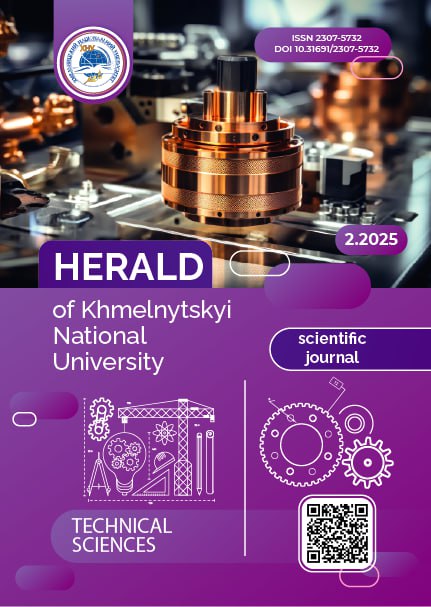CONTACT ZONE ACTIVE POLYMER ABRASIVE COMPOSITES FOR TITANIUM ALLOYS PROCESSING
DOI:
https://doi.org/10.31891/2307-5732-2025-349-86Keywords:
titanium alloys, honing, surface processing, filler, abrasive compositesAbstract
The article is devoted to the actual problem of complex processing of titanium alloys, from rough high-performance grinding to the finishing operation, namely fine honing. The results of the study were used in the technological process of manufacturing precision parts intended for operation in extreme conditions. The influence of modifying the filler surface on the structure and compositional features of the degradation products of the polymer bond of the abrasive composite in the zone of dynamic contact with the material processed was investigated. The possible mechanism of action of the active component of the degradation products on the surface layer of the metal during the grinding process was analyzed. They demonstrate the possibility of directed formation of adsorption-active centers on the surface of inorganic filler particles, namely pyrogenic silica obtained by the evaporation-condensation method, by choosing the optimal mode of powder heat treatment. It was found that the use of an excess of azoisobutyronitrile 5% by weight, as a hardener of a binder based on methyl methacrylate contributes to the formation of a substance with high surface activity in relation to titanium in the composite. The release of the above mentioned substance in the process of grinding titanium provides a significant reduction in the friction coefficient in the contact zone, which allows combining an increase in processing productivity with a simultaneous improvement in the quality indicators of the processed surfaces of parts. In particular, (α+β) - titanium alloy (BT22) were subjected to processing in the internal grinding mode. Finishing of tubular parts was carried out by honing. To improve the quality of honing and ease of processing, a corrosive active environment (CAE) was created in the cutting zone by filling the diamond antifriction polymer composite with chemically active components such as sodium fluoride, which promotes corrosion of the treated surface, thereby facilitating the removal of material layers and processing. A comparative series of active components was compiled in order of decreasing corrosive activity. The optimal time for heat treatment of silica particles depending on the heat treatment temperature was established, as well as the optimal concentration of the surfactant in the composite. Based on the data obtained, NaF was selected as a filler for finishing abrasive composites based on fluoroplastic.
Downloads
Published
Issue
Section
License
Copyright (c) 2025 РОМАН КУРГАНОВ (Автор)

This work is licensed under a Creative Commons Attribution 4.0 International License.

